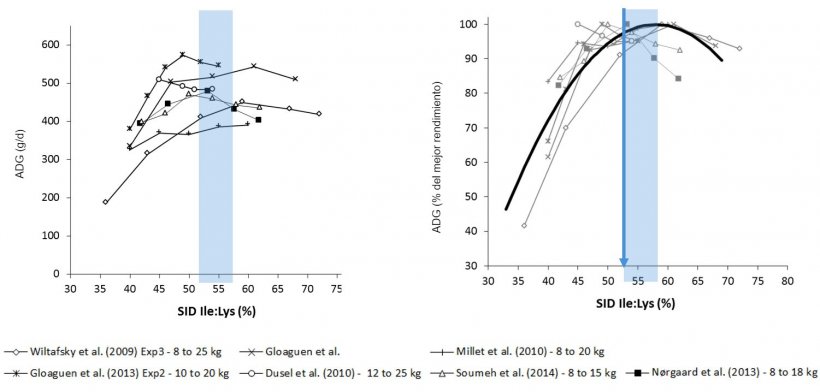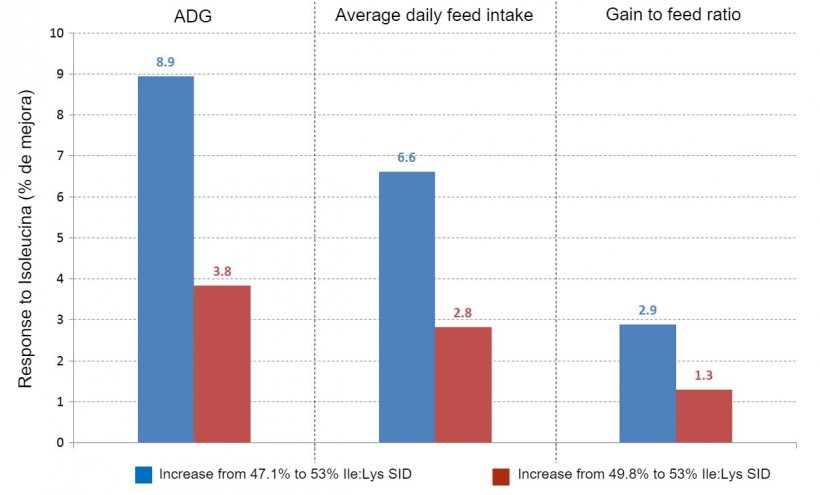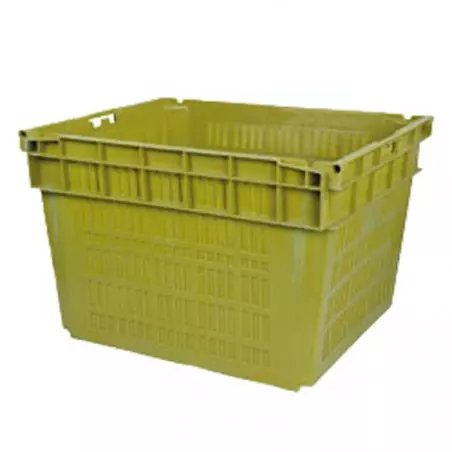The current situation of pig production, with a tight control on the use of medicated premixes and the soon-to-be ban on zinc oxide in the European Union, means that different nutritional strategies are being put in place to maintain intestinal health, keep bacterial microflora in balance, and guarantee nutrient absorption and optimum animal growth.
These strategies involve the use of different additives, highly digestible ingredients and above all, the formulation of low-protein diets with a balanced amino acid profile to ensure the proper animal growth.

Benefits of low-protein diets
Lowering the protein level in the diet has multiple benefits:
- Allows less soy to be included in the diet, lowering the potassium content, resulting in lower water consumption and a lower volume of slurry
- With a lower protein content, the animal has to deaninmate fewer amino acids, which means a lower energy cost, a lower synthesis and excretion of urea, a lower amount of nitrogen in the slurry and therefore, less risk of acidification and eutrophication.
- The amount of undigested protein reaching the large intestine is minimized, avoiding the formation of biogenic amines that negatively impact intestinal microbiota and the protective function of the mucous membrane. It also avoids the fermentation of this excess, which reduces the risk of proliferation of pathogenic bacteria, such as E. coli, and therefore reduces the occurrence of diarrhea.
- Nitrogen intake is lower and nitrogen retention efficiency is higher.
Essential amino acids
In order to make this formulation change, we must be sure that we know the requirements for each essential amino acid and that the diet provides the necessary amounts to meet the growth and maintenance needs of the animal.
There are nine essential amino acids for swine, meaning these amino acids cannot be synthesized by the animal and must be supplied from the feed stuffs in the diet and/or by synthetic amino acids available on the market (lysine, methionine, threonine, tryptophan, valine and isoleucine). Using these ingredients, we can formulate diets limiting the level of protein, taking advantage of the benefits mentioned above and maintaining the growth of the animal. In the future, the register of new amino acids will make it easier to work with diets even more limited in protein.
The lysine, threonine, tryptophan and valine requirements have been extensively studied and are well known, which has allowed us to define an ideal protein profile. In the case of isoleucine, the next limiting amino acid after valine, it is important to know what its requirements are in order to reduce the level of protein while maintaining the growth of the animal.
Isoleucine is a branched-chain amino acid (along with valine and leucine) that belongs to the long chain neutral amino acids (such as tryptophan, histidine, phenylalanine and tyrosine), which compete for transporters at the blood-brain barrier level.
With branched-chain amino acids (Val, Ile and Leu), we must treat them as a whole because they share common metabolic pathways, so that when there is an excess of leucine, the catabolism of valine and isoleucine is accelerated. For example, when there is an excess of leucine and a deficit of valine or isoleucine, there is a significant decrease in feed consumption as demonstrated by Wiltafsky et al (2010).
Isoleucine
Focusing on isoleucine, Van Milguen et al (2012) conducted an extensive meta-analysis study to determine the needs for this amino acid: diets containing blood meal or blood cells were found to have a higher requirement for isoleucine. This is because these ingredients are rich in leucine, the excess of which is capable of activating the metabolic pathways that catabolize isoleucine. On the other hand, when this type of raw material is not used, the requirements of isoleucine in relation to lysine are established at 53%. This ratio must be maintained in order to achieve better growth as shown in Figures 1 and 2. In the former, we see that the ratio for maximizing growth is 53%, while in the latter, we summarize some trials in which diets are compared with a deficit ratio in isoleucine versus balanced diets (53% Ile/Lys SID). The three graphs show an improvement in average daily gain, voluntary feed intake and improved efficiency.


Figure 2: Pig response to increased Ile/Lys SID ratios. Source: Ajinomoto Animal Nutrition Europe
Conclusion
Therefore, when working with low protein diets, it is important to adjust the requirements of each amino acid and maintain the ideal protein profile to ensure maximum piglet growth, while contributing to more sustainable animal production and avoiding intestinal health problems.






